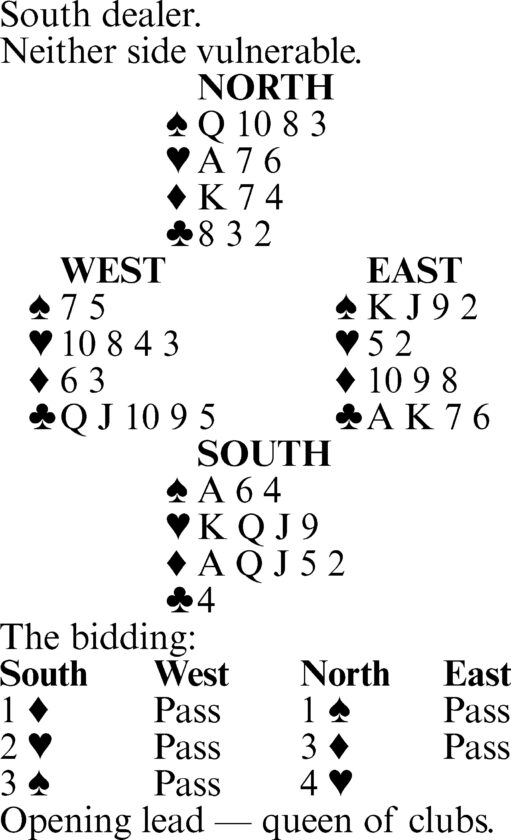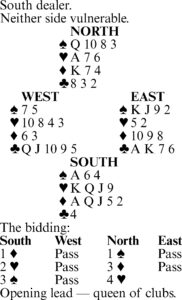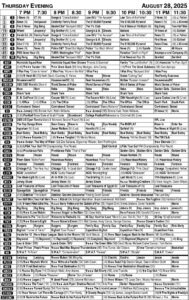Bridge by Steve Becker

Most hands played by declarer are of a simple sort. They do not require specialized knowledge or heavy thinking for the best result to be obtained. Since these types of hands are so numerous, the player who consistently fares well on them, avoiding potential pitfalls along the way, is well on the way to becoming a first-rate declarer.
Consider this deal where South went down in a contract he should have made. West led a club and continued with a second club, ruffed by declarer.
South then drew three rounds of trump, hoping the opposing trumps were divided 3-3. When East showed out on the third heart, the jig was up. West ruffed the third diamond lead and cashed three club tricks, and declarer finished down two.
What South had done, in effect, was to pin all his hopes on a 3-3 trump division, about a 1-in-3 proposition. Instead of settling for such a low-percentage probability, declarer should have sought a way to add to his chances by catering to a possible 4-2 trump division, which occurs in about 48 deals out of 100.
To this end, South should refuse to trump the second club lead, and also the third club lead if the defenders continue the suit. On these clubs, declarer discards two spades, at which point the defense collapses. South takes the next ten tricks regardless of what the defenders do.
By adopting this method of play, South makes the contract whenever the opposing trumps are divided 3-3 or 4-2. He increases his chances of making four hearts from 36% to 84%, and goes from being a 2-1 underdog to a 5-1 favorite.
Tomorrow: Bidding quiz.


